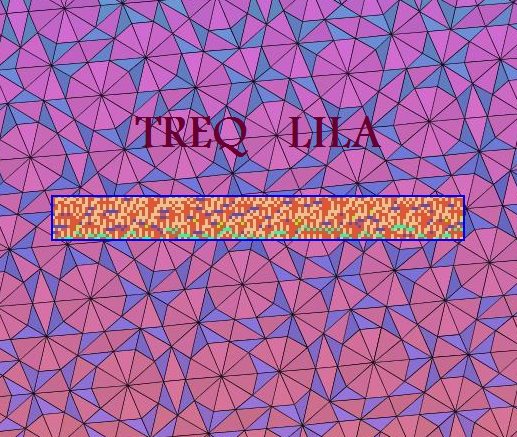


This makes for an interesting challenge. In most Western music, choosing the melody is one of the composer's basic rights. With Wolframtones, all you can do is 'evolve' the melody by repeatedly generating variations and picking the one that sounds best. Composition becomes less like an act of artistic free creation, and more like breeding a species of songbird.
Another challenge for the composer is that the 'instruments' used by Wolframtones are rather inexpressive. They are taken from the General MIDI Level 1 Sound Set, a basic kit of sounds that is implemented on most computers these days. One can get around this pretty easily, but I decided to accept it as another constraint and see if I could still make interesting music. I processed the sounds a bit using Audacity, a simple freely available piece of sound editing software. But the 'studio wizardry' was pretty minimal by today's standards.
So much for constraint. What about freedom? One of the great virtues of Wolframtones is its diverse selection of scales. We all know the major and minor scales, and some of us know Dorian and Phrygian, but Wolframtones makes it equally easy to explore more obscure options like harmonic Neapolitan minor, or double-Phrygian hexatonic.
I'd recently become fascinated by the music of medieval Andalusia — especially as found in the remarkable albums El Agua de la Alhambra and Jardin de Al-Andalus by Eduardo Paniagua and his Arabi Trio. The mathematically sophisticated tiling patterns of this culture somehow reminded me of the challenge of making music with cellular automata: seeking beauty while working within pre-established rules. So, I decided to explore scales with a bit of a Moorish tinge. But following the worst sort of mix-and-match orientalism, some of the titles below are taken from Gnawa mythology, to hint at the trance-inducing qualities of their repetitive drumming. To link these themes, I used one of Greg Egan's quasiperiodic tilings as the basis for the background art on these pages. If you go to his webpage, you can see an applet that endlessly generates these deterministic but never-quite-repeating patterns.
You can download the tunes individually below. To do so without seeing this chit-chat, go here. You can also download the whole album as a zip file. Enjoy!
John Baez,
Music produced by
John Baez
using
Wolframtones.
Background tiling by
Greg Egan.
Treq Lila is licensed under a
June 2, 2009
Creative Commons Attribution-Noncommercial-No Derivative Works 3.0 United States License.